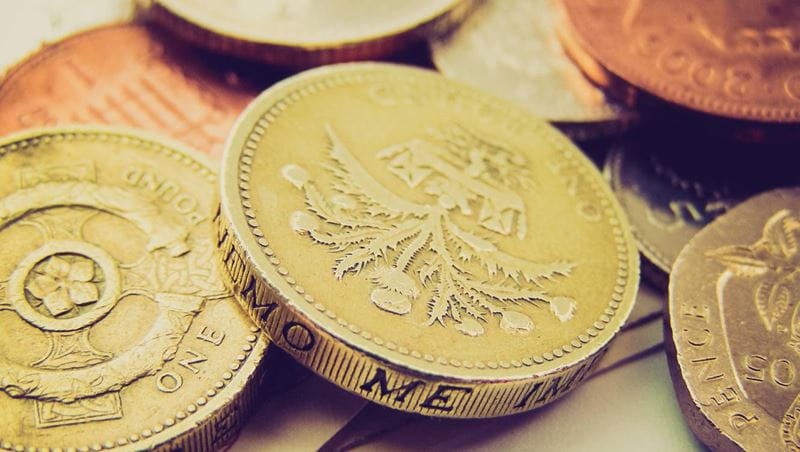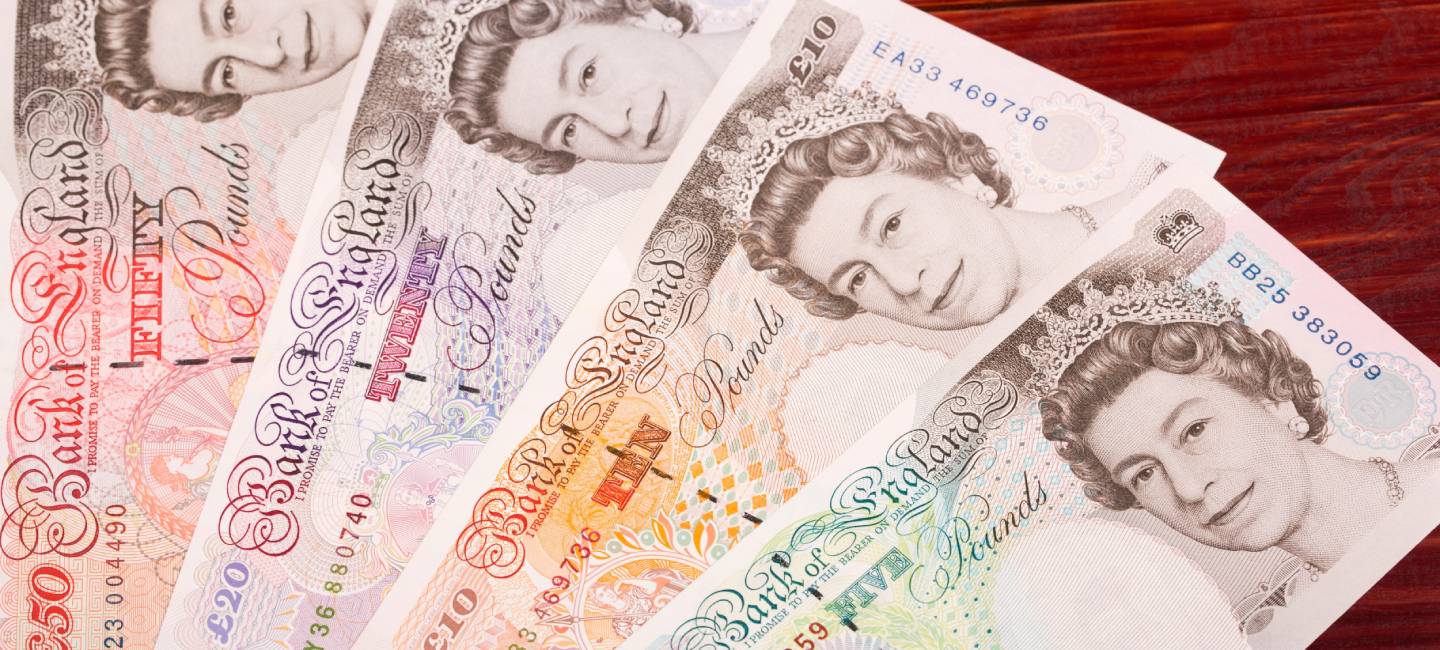Do you have old coins and banknotes lying around that you don’t know what to do with? While you might not be able to spend them in the corner shop or the pub, they still have some value – whether that’s to you or to your favourite good cause.
This guide explains exactly what to do with your old money – including Scotland and Northern Ireland banknotes – from depositing it at the bank to discovering if you’re holding onto a hidden treasure.
What’s on this page?
The ‘old’ round pound coin is probably the coin you’re most likely to have still hanging around. The old £1 coin launched in 1983, replacing the old £1 banknote, and went out of circulation in October 2017 to be replaced by a thinner, lighter 12-sided coin.
The new £1 coins are more secure and harder to counterfeit thanks to their distinctive 12-sided shape, a double metallic design (nickel-brass and nickel-plated alloy) and a hologram-like image.
That means the old round coins are no longer legal tender and shops, restaurants and other retailers won’t accept them. If you’ve got any left, you might be keeping them for the nostalgia of looking at the different emblems that emblazon them (and if you want a trip down memory lane, the Royal Mint website has pictures of all the different designs of the old £1 coins).
But should you stumble across any old coins at home, there are a few options that can actually convert them to cash. As well as old £1 coins, these options apply to most other coins no longer in circulation, such as large 50p, 10p and 5p coins.
We round up your options below.
Most UK banks will allow you to pay into your account at the Post Office. This is probably the easiest place to get rid of old coins (as well as notes) – you can deposit them into your bank account at any Post Office.
To do this, your bank must be part of the ‘Banking Framework’. This allows customers of these banks and building societies to withdraw cash, deposit cash, deposit cheques or check their balance at any of the 11,500 Post Office branches in the UK. You can check whether your bank or building society participates in this scheme at the Post Office website.
A spokesperson for the Post Office told Saga Money: “We do still accept ‘old’ pound coins over the counter – but they have to be in good condition. And people can deposit them into their bank account.”
The Post Office cannot exchange old coins for cash. They must be deposited into a participating bank account.
Some larger post offices (Crown post offices) may allow you to use old coins to pay for goods and services, although they are not obliged to do this.
Many high street banks let you deposit old £1 coins into your bank account or trade them in. This is also a simple option, as long as you already bank with a bank that will accept them and if you have a branch nearby.
Just be aware that this is done at your bank’s discretion – as these coins are no longer legal tender, they aren’t under any legal obligation to accept them. It’s best to check directly with your bank to confirm the latest rules.
In general, banks including Bank of Scotland, Barclays, Halifax, HSBC, Lloyds, Nationwide, Santander and Virgin have been accepting old pound coins as deposits, as long as you’re a customer.
If you’re thinking that the most you can get for an old pound coin is a pound… think again. If you have one of the rarer designs, your coin could be worth more than its face value. The “Royal Arms” was the most common design, but there were 41 different image and date combinations in circulation, and certain coins could fetch you as much as £20.
However, even if a coin is rare, it’s not necessarily valuable. Oliver Reece, British coin specialist at Baldwin’s, explains: “The 2016 £1 coin with a reverse design depicting the heraldic supporters of the United Kingdom by Gregory Cameron [also known as the ‘Last Round Pound’] is a little harder to find compared to other pound coins. But I think a coin dealer would be unlikely to offer any more than face value for it.” Still, it might still be worth a punt on eBay.
Or you could look into vintage websites such as Vintage Cash Cow to see how much money you might be able to get for your old coins. Kimberly Day, coin expert at The Britannia Coin Company, part of RWB Auctions, says: “eBay can help you identify the current market price for old coins. Use the auction site to see what coins like yours are selling for – though beware, some scammers price high to catch unsuspecting collectors.”
She adds: “Remember that coin dealers and antique shops make their profit by selling your old coins and banknotes on for a higher price. You may not get the prices you see on the internet but selling all your old coins or notes in one go can take the hassle out of the process.”
If you don’t need the money, you could donate your old coins to charity. Many charities welcome old and foreign coins and notes. You may be able to take them to your local charity shop, or if you have a favourite charity, you could check their website.
For example, the charity RNIB lets you request a prepaid box to send your foreign and old currency.
You can donate old or foreign coins and notes to the Royal British Legion by taking them to a Sainsbury’s travel money bureau.
Other options include posing them to Kidney Care UK – the address is Stamps & Coins Appeal, Kidney Care UK, 3 The Windmills, St Mary's Close, Turk Street, Alton, GU34 1EF. Or to Alzheimer's Society, Suite 2, 1st Floor East Wing, Plumer House, Tailyour Road, Plymouth, PL6 5FS
You might prefer to hold on to some of your old coins as a keepsake or pass them on to grandchildren. Kimberly Day told us that an increasing number of notes and coins feature King Charles III today.
“Money with the image of the late Queen Elizabeth II is still legal tender and will not be completely phased out anytime soon, but at some point long in the future it will disappear from our pockets. It’s unlikely that the coins in your change will become rare and valuable as time passes, but it does not hurt to keep a few back just in case.”

Even though the paper versions of UK banknotes are no longer legal tender, there are still a surprising number of them in circulation.
Figures from the Bank of England show that there were still 375 million old paper banknotes in circulation in the UK as of June 2025, worth almost £6.6 billion, even though the old paper £20 and £50 notes stopped being legal tender in October 2022.
The paper £5 note was the first banknote to be overhauled to a polymer version (the ones with the ‘plastic’ feel) featuring Sir Winston Churchill in 2016, and the £10 note followed in 2017 with an image of Jane Austen.
The new £20 note, featuring the artist JMW Turner, launched in February 2020, and the new £50 note was brought into circulation in June 2021 with an image of scientist Alan Turing. As with the redesigned £1 coin, these new notes have been introduced for greater security.
Features including a transparent window with a portrait of King Charles III), colour-changing pictures and holograms, all make the notes harder for criminals to forge. The new polymer notes are also more durable, which should be better for the environment as they won’t need to be replaced as frequently.
They are also easier to keep clean and, while not indestructible, they are significantly stronger – and should withstand any accidental spins in the washing machine or exposure to high temperatures. As with old coins, there are several options when it comes to exchanging your old banknotes.
In most cases you can pay old notes into your bank account at the Post Office, as long as your bank allows banking at the Post Office (most UK banks do). Check whether your bank or building society does at thePost Office website. The advantage of this approach is that you are likely to have a Post Office nearer than your local bank branch, and you can take old coins at the same time.
You can also swap old paper banknotes for the same value in current polymer notes at larger Post Office branches (mostly Crown Post offices), even if you don’t have a bank account. This service covers the old paper Bank of England £5, £10, £20 and £50 notes from the last series.
You can swap up to £300 every two years, and you will need to bring a form of photo ID with you. To check which branches do this, visit the Post Office branch finder, enter your town or postcode. You then need to filter the results – select 'Filter services' then 'Your finances', then 'Bank of England banknote exchange.'
Many banks will still accept old notes from existing customers, allowing you to deposit them into your account. The banks that will do this include Barclays, Halifax, Lloyds, Nationwide, NatWest and Santander.
The Bank of England accepts banknote (not coin) exchanges in person or by post with a completed application form. But this approach is probably more hassle and slower than the other options.
The Bank stresses that money is sent at your own risk and the postal service is mainly suitable if you have very old banknotes that can’t be exchanged at the Post Office. It can take up to 90 days for you to get your money. You might also be asked to provide proof of ID, such as a passport and proof of address such as a driving licence or utility bill.
Exchanges can be carried out in person at the Bank of England, Threadneedle Street, London. But it can be very busy and you may be given a ticket with a time to go back later.
There’s more detail about exchanging old notes on the Bank of England website.
Many charities will be happy to accept old banknotes or foreign banknotes as donations – all the options listed above apply to notes too.
Technically, all banknotes issued specifically for use in Scotland and Northern Ireland are legal currency but not legal tender. (‘Legal tender’ has a narrow technical meaning relating to money which can be used to pay off a debt.) Polymer £5 and £10 notes were released in Scotland in 2016, followed by polymer £10 notes in 2017 and £20 in 2020.
Polymer £50 and £100 notes were released in 2021 and 2022. You can exchange old notes or pay them in at bank branches. Polymer £5 and £10 notes were released in Northern Ireland in 2019 and £20 notes in 2020, followed by polymer £50 notes in 2020. You can exchange old notes or pay them in at bank branches.
If you have a Bank of England banknote that’s been damaged, the Bank of England says it will exchange it, providing at least half of it remains. To do this, you will need to fill in a damaged banknote application form and post it to the Bank of England with all the remains of the banknote. You will also need to provide a proof of ID and address.
Most claims are assessed within a month and you’ll be reimbursed by electronic payment if you’re successful.
The Bank of England says it receives thousands of claims to replace damaged banknotes each year. In 2024, it received:
If you have damaged Scottish or Northern Ireland notes, you should return them to the issuing bank – not to the Bank of England. In most cases you can only exchange a damaged note if you still have at least half of the banknote, including a visible serial number.
To apply for a reimbursement, fill out the relevant damaged banknote application form and send it, and any other requested information, with all of the remains of the banknote. If you’re sending a lot of money, you might want to use Royal Mail special delivery. Here are links to the claim forms and contact details that you’ll need – they are different for each bank.
Many factors determine the value of old notes. If you think you have a valuable banknote, it’s best to get it valued by an expert.
Here are some of the main factors that determine the value:
Condition: The better the condition, the more it will be worth
Low serial numbers: All banknotes contain two serial numbers. Notes beginning with AA01, followed by a low number for the second prefix, could be worth more. This is because these are the earliest prints which were often donated to organisations and individuals that were involved in its development. The first polymer £5 note, featuring Winston Churchill, for example, with the serial number AA01 000001 was given to Queen Elizabeth II in 2016.
Special serial numbers: There is also speculation that dates related to the figures on each banknote could also be worth more. For example, the birth and death dates of Jane Austen as serial numbers on relevant banknotes.
Age: Get any notes that are pre-1960 valued. You might be surprised what they could be worth.
You can search for specialist coin dealers and shops through the British Numismatic Trade Association or do a simple search online to look for dealers in your area.


.jpg?la=en&h=354&w=616&hash=CED5102CC31DD9CFC5BA0E54D9778E16)

.jpg?la=en&h=650&w=1440&hash=D2D232A61FCEAEBDC0D69D8AE38E8E41)
